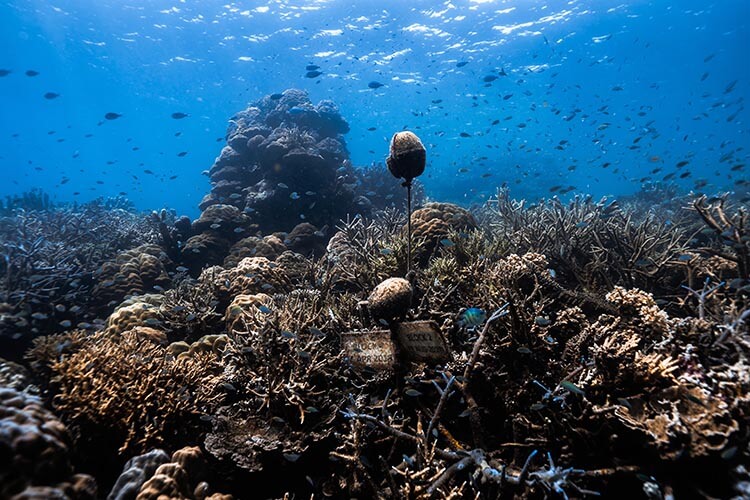
Mars, Incorporated – better known for its chocolate bars – has recently completed ‘The Big Build’, which it claims is ‘one of the largest single coral restoration events in history.’
The Big Build involved planting 30,000 corals across 2,500 square meters of reef in the Spermonde Archipelago, Indonesia, part of a larger ‘Mars Sustainable Solutions’ (MSS) programme which aims to restore 1 million corals worldwide by the end of 2023.
The Archipelago, off the coast of Makassar in Sulawesi, was the launch site of the Mars Coral Reef Restoration Program in 2006, and the location of its Sheba Hope Reef, an artificial reef spelling the word H-O-P-E, which was unveiled in 2021 as part of the wider SHEBA Hope Grows initiative – named after the pet-food brand which it owns – a programme to restore more than 185,000 square metres of coral reef at sites around the world by 2029.
In order to facilitate the large-scale restoration project, The Big Build used the ‘Mars Assisted Reef Restoration System’ (MARRS), a system designed in 2011 to restore damaged reefs at a greater speed, larger scale and lower cost. Experienced teams of four divers are able to use MARRS to install 500 reef stars – hexagonal sand-coated frames with coral fragments attached – in just two days.
Related articles



Frank Mars, Board Member and Former Board Chair of Mars, said: ’14 years ago, I asked a small team of Mars Associates a simple question if it would be possible to rebuild a coral reef ecosystem. And today, I’m proud to say that the answer is yes, both technically and scientifically.
‘As we build on two decades of dedication to coral restoration through Mars Sustainable Solutions, it’s thrilling to witness the cross-sector, community-centred collaboration shown in ‘The Big Build,’ demonstrating that it is possible to deliver resilient coral restoration at a large scale. The world we want tomorrow is not going to materialize on its own.
‘The success of SHEBA Hope Reef demonstrates that we can change the course of coral reefs if we collectively change how we live, work, and play together today.’
Today, the programme extends to more than 30 reefs across 10 different countries, where Mars and its partners have successfully installed more than 60,000 Reef Stars, planting 900,000 coral fragments in the process.



‘Through “The Big Build” we will harness the power of cross-sector partnerships to restore critically endangered coral reefs at the centre of marine biodiversity within Indonesia,’ said Professor David Smith, Chief Marine Scientist at Mars. ‘Our collaborative efforts will spread a message of hope and optimism to the global community. We aim to reveal the need for building trusted partnerships – locally and across the globe – to deliver large-scale restoration at the scale that is needed to preserve these invaluable ecosystems and thereby secure a brighter future for our oceans.’
Mars reports that its SHEBA coral reef restoration efforts have shown promising impacts with significant increases in coral growth from 2 per cent to 70 per cent, an increase in fish populations of 260 per cent prior to restoration and a 64 per cent increase in the number of fish species.
Restoration efforts are ongoing, with recently expanded initiatives in Hawai`i, O’ahu and Maui, where it supports 30 reef sites with Hawaiian restoration project Kuleana Coral Reefs.
For more information on Mars’ reef restoration projects, visit www.buildingcoral.com, or follow
- Conception liveaboard fire captain appeals manslaughter verdict - 5 December 2025
- New global dive-travel platform Scubago set to launch in 2026 - 3 December 2025
- DIVE’s Biggest Shots of 2025 - 1 December 2025


